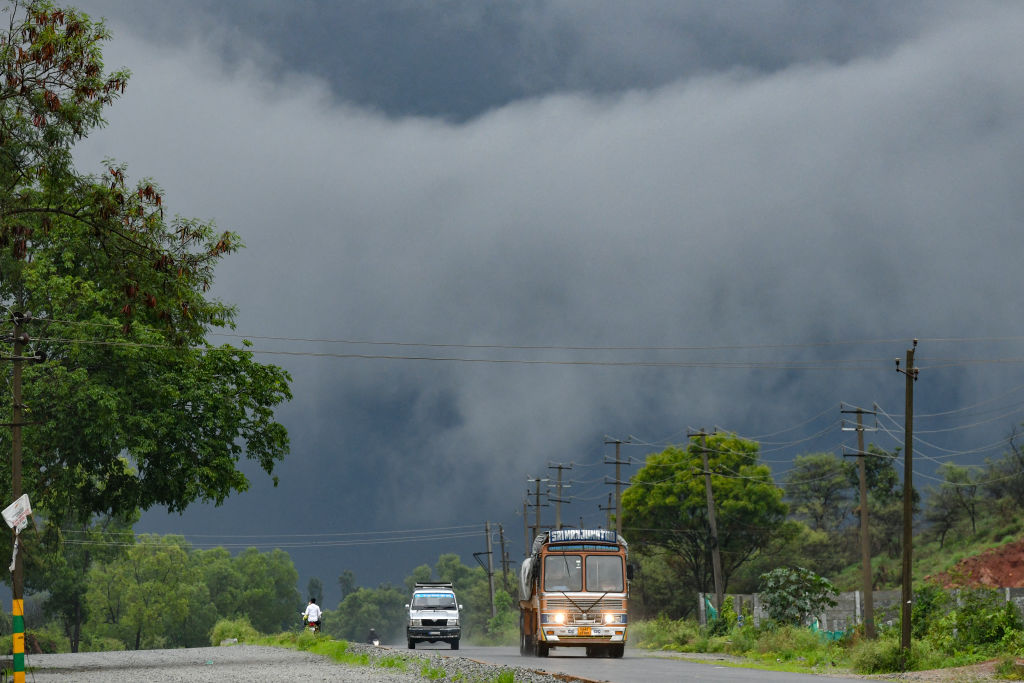- Saturday, November 23, 2024
India badly needs good monsoon rains as below-normal rainfall in 2023 depleted reservoir levels and hit food production

By: Shajil Kumar
INDIA said on Monday it is likely to receive above-average monsoon rainfall in 2024, in a potential boost for the country which depends heavily on the summer rains for its farm output.
The lifeblood of India’s economy delivers nearly 70 per cent of the rain needed to water crops and recharge reservoirs and aquifers, with nearly half of its farmland, without any irrigation, depending on the June-September rains to grow several crops.
A spell of good rains could lift farm and wider economic growth, helping to bring down food price inflation, which has remained above the central bank’s comfort level in recent months and prompted it to resist cutting lending rates.
The monsoon, which usually arrives over the southern tip of Kerala state around June 1 and retreats in mid-September, is expected to total 106 per cent of the long-term average this year, said M. Ravichandran, secretary in the Ministry of Earth Sciences.
India badly needs good monsoon rains as below-normal rainfall in 2023 depleted reservoir levels and hit food production. The government responded by imposing curbs on exports of sugar, rice, onions, and wheat.
Resuming exports depends on how quickly production recovers in 2024, which is not possible without good monsoon rainfall.
“The forecast based on both dynamical and statistical models suggest that quantitatively the monsoon seasonal rainfall during June to September is likely to be 106 per cent of the long period average,” Ravichandran said during a news conference.
The India Meteorological Department (IMD) defines average or normal rainfall as between 96 per cent and 104 per cent of a 50-year average of 87 cm (35 inches) for the four-month season.
IMD chief Mrutyunjay Mohapatra said El Nino was weakening and it would enter a neutral stage by the time the monsoon sets in. La Niña, which increases rainfall in India, would then set in by August, he added.
Data from the 1951-2023 period shows India experienced above-normal rainfall in the monsoon season on all the nine occasions when La Nina followed an El Nino event, Mohapatra said.
El Nino conditions – periodic warming of surface waters in the central Pacific Ocean – are associated with weaker monsoon winds and drier conditions in India. La Nina conditions – the antithesis of El Nino – are the dominant factor in the likelihood of “above-normal” rainfall during the monsoon season, D S Pai, a senior scientist at the IMD, told PTI.
The IMD’s first stage forecast indicates that the monsoon will be above normal, and this is positive for the food inflation outlook provided the distribution is even, IDFC First Bank economist Gaura Sengupta said.
“For fiscal year 2024/25, we expect headline inflation to average at 4.5 per cent versus 5.4 per cent (last year), supported by easing in food inflation pressures and core inflation remaining contained,” Sengupta said.
India imposed export curbs on rice and other commodities just before the election to address rising prices caused by below-normal rainfall.
However, with surplus rainfall, production could improve, allowing New Delhi to ease these export curbs, particularly those on rice shipments, said a New-Delhi-based dealer with a global trade house. (Agencies)
Nushrratt Bharuccha on Chhorii, pressure of comparison with Lapachhapi, upcoming…
Abhimanyu Dassani on Meenakshi Sundareshwar, how his mom Bhagyashree reacted…
It’s a wrap for Prabhas, Kriti Sanon and Saif Ali…